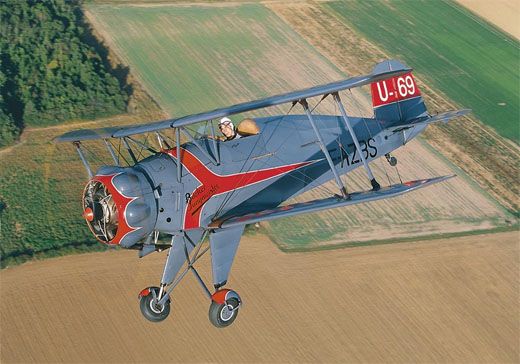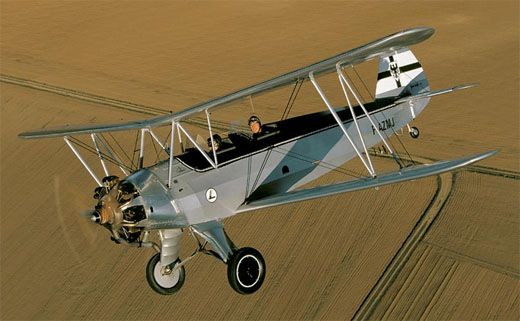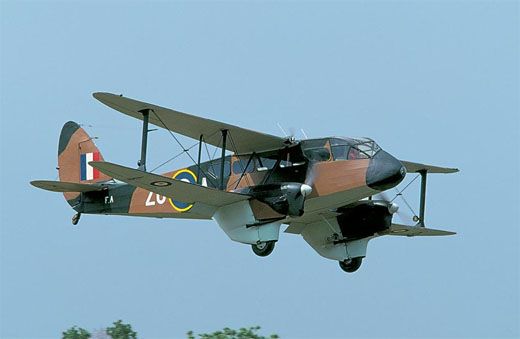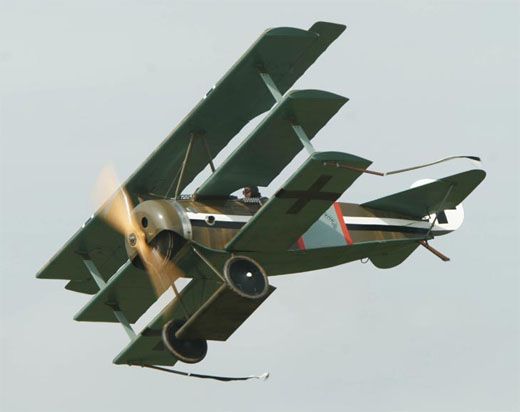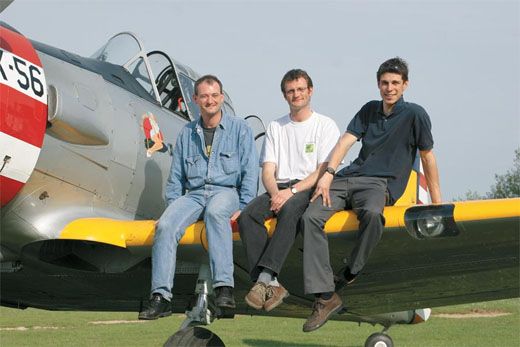Le Airshow
Where can you see a a formation of World War I fighters, a Mirage 2000, and a Junkers Ju 52 all on the same day?
/https://tf-cmsv2-smithsonianmag-media.s3.amazonaws.com/filer/71/1d/711dc8f3-4118-480f-87ad-a24884fe059f/le_airshow.jpg)
Patrice Hammonnet, 38, a tall man with little round glasses, would like the world to know that aviation was born in France.
"You've heard of Clément Ader, right?" he asks. Ader built the Eole, a steam-powered monoplane with wing-warping, and made a 160-foot, fairly uncontrolled, low-level flight in it on October 9, 1890, 13 years before the Wrights' first powered flights.
"And the word 'avion'-do you know where this comes from?" The Avion was the second aircraft Ader built and flew. " 'Avion' originally stood for 'appareil volant imitant l'ouiseau naturelle,' " he declares proudly. Roughly translated: a flying machine that imitates a bird's natural flight. "And that is French!"
Hammonnet is a member of the French aircraft restoration group Memorial Flight, and his perspective-that "France" and "aviation" are synonymous-is one shared by pretty much everyone at the Ferté Alais airshow, held in the tiny French village of Cerny. Every May since 1974, fans of European (especially French) aviation have gathered at the remote grass airfield here, about 40 miles south of Paris, for an airshow focused on antique aircraft.
For most Americans, aviation history begins with the Wright brothers. But the French have their own brothers: Joseph and Jacques Montgolfier, who in 1783 sent two people off on the world's first manned flight: a seven-mile trip in a hot-air balloon. Ever since, the French have been ardently devoted to their nation's aviation history.
The Wrights' 1903 flights only ignited the imaginations of the French, who had been developing heavier-than-air craft for years. In the early 1900s, a number of French designers threw their hats in the ring-brothers Gabriel and Charles Voisin, Alberto Santos-Dumont, and Armand Deperdussin, to name a few-with results ranging from moderate success to breaking up over (and in) the Seine.
Largely a tribute to French aviation, the Ferté Alais airshow (named after a nearby town) was started by local pilot Jean-Baptiste Salis, who died in 1967. His family, together with other members of the Jean-Baptiste Salis Association, manage the airfield, and used it to stage the airshow itself. In 1997, French publishing giant Larivière took over management of the show (the Salis association continues to contribute pilots, aircraft, and acts). Since then, the entry fee has soared to 26 Euros-about $31 per person-which angers the traditionalists. Among them is Memorial Flight, an organization of 30 volunteers who restore vintage airplanes to flying condition. Though the group rehabilitates its antiques in a hangar adjacent to the Musée de l'Air at Le Bourget airport, just north of Paris, they hangar their completed craft at the Cerny Aerodrome.
Today is the day before the 2005 show opens to the public. The members of Memorial Flight tow their meticulously restored birds out to the runway. There's a Blériot XI 2, the same type in which Louis Blériot made the first aerial crossing of the English Channel, in 1909; a Royal Aircraft Factory SE5a, which was, along with the Sopwith Camel, the most successful British fighter of World War I; a Fokker DR-I tri-wing, the type made famous by World War I ace Manfred von Richthofen-the Red Baron; and a Morane-Saulnier AI type XXIX, a French aircraft that saw little combat in World War I but afterward became a popular trainer. They are all small-under 2,000 pounds-with engines capable of 80 to 200 horsepower and top speeds ranging from about 70 to 140 mph. Today the sky is low overcast and the windsock waves lazily, indicating a mild wind-perfect for getting and keeping these lightweight, modestly powered old airplanes aloft.
One of the airplanes remaining in the hangar is Memorial Flight's 1918 SPAD XIII. "Preparing the SPAD to fly is like tuning a piano," says Arnaud Mars, 31, who works full time at the Musée de l'Air, in addition to volunteering as a Memorial Flight restorer. "All the cables have to be strung and tightened perfectly in order for the SPAD to fly." Today there's no time, so the SPAD-the oldest XIII in the world and the only one still flying-stays in the hangar.
After running through the systems on his airplane, each pilot signals to the person standing at the propeller to give it a whirl. There's a marvelous sound the engine on a very old airplane makes as it "catches," then roars to life.
The first to take off is the Blériot. Its engine sputters to a triumphant start, and two Memorial Flight members hold its tail down until the chocks are removed. Mars and fellow Memorial Flight member Jean Pierre Garibaldi are at the controls. The crowd cheers as the Blériot heads merrily down the grass strip. The old airplane takes off, but a moment later bumps back onto the grass and disappears over a low slope. A few minutes later, the airplane taxis back. This is the Blériot's first flight since it was restored; its balance had not yet been adjusted to match its payload (Garibaldi and Mars). "It's just a matter of adjusting a bolt on the tailplane," says Melvyn Hissock, 48, the sole member of Memorial Flight's British contingent.
The Blériot finally gets airborne, and the other antiques follow, creating a romantic group portrait of early flight above the rolling green hills of central France. A steady drizzle soon turns into a drenching rain, however, forcing everybody to land.
The airfield is perched above farmland; trying to land here, many pilots say, is like trying to set down on an aircraft carrier. With only 3,000 feet of grass strip, pilots are advised to land a little deeper than they're used to. A number of aircraft that cannot land at the small airfield, including the jets, are based out of Orly airport, several miles to the north.
Through the rain, a glamorous-looking Dassault Flamant MD 311, a late-1940s French trainer, lands gracefully. As soon as the Flamant touches down, a shaggy sheepdog appears in the aircraft's transparent nose. The dog jumps out of the airplane barking madly, only to get hopelessly wet and gummy in the rain.
After the delicate antiques have been stowed away, a no-nonsense Dassault Mirage 2000 jet interceptor appears and thunders through a low-level aerobatics routine. The afterburner is the only bright spot in an otherwise sullen sky. The sound reverberates through the airfield hangar, dramatizing the contrast between the jet above and the ancient airplanes on the ground.
The contrast between old and new is also evident in the pilots. The jet pilots are lean, compact, and dressed in neatly pressed flightsuits. The pilots of the antique airplanes are like something out of a photograph from the early 1900s, right down to the handlebar mustaches, leather caps, and goggles.
Regardless of which era the pilots are representing, the camaraderie among them is strong as they mingle in the hangar, which is now serving as something of a clubhouse for the devoted. There's a large open area of tables and a field kitchen that looks like it could serve about a hundred. Scattered throughout the rest of the space are hulking airplane skeletons and aviation odds and ends.
Every wall is covered with beautiful watercolor renderings of airplanes from important moments in French aviation history: Henri Guillaumet crashing his Potez 25 biplane in the frigid Andes mountains in 1930; Antoine de Saint-Exupéry flying a Bloch 174 to Arras during World War II.
It's a fitting setting for the painstakingly restored aircraft that Memorial Flight keeps here. The group's philosophy: "Each airplane should be absolutely identical to when it was originally built," says Mars. Group members don't hesitate to point out that their aircraft are all "original replicas"-detailed copies built around original engines-while the Jean-Baptiste Salis Association's aircraft are rebuilt with modern engines, brakes, and sometimes navigational equipment. Some start out as other types of airplanes altogether, and are altered cosmetically. "They create copies of aircraft to use in the movies," Mars says. "The public can't tell the difference, but we can."
The Salis association was formed to continue the work of its namesake. From the moment Salis received his pilot's license, in 1917, he was devoted to aviation. In 1939 he agreed to create a school for air force pilots and mechanics in the town of La Ferté Alais. World War II disrupted the school's activities, but by 1946 Salis had reopened the Cerny field as home to a glider school.
The following year, Salis established an aircraft restoration facility and museum on the grounds, laying the foundation for the association and the airfield as home to antique airplanes. After his death in 1967, his son Jean and Jean's three sons carried on his tradition of restoration and refurbishment.
On the first day the show is open to the public, it is raining heavily. The field is one giant mud puddle. Planks have been laid across some of the areas to try to keep people from sinking up to their knees, but it's a losing battle. Almost everyone is covered in muck. The flying programs are put off until late afternoon.
Despite the wretched weather, the show brings in the same number of people it always has: roughly 30,000. Families come in droves, dragging happy kids with their faces turned upward to catch a glimpse of whichever airplane is making the loudest noise.
The Ferté Alais airshow is quintessentially French. Each day the show takes a two-hour break so that everyone can enjoy lunch-red wine, sandwiches on baguettes. And the show's announcer, Bernard Chabbert, provides commentary with a touch of lyricism. As three Stampe S.V.4s-1940s Belgian aerobatic aircraft-take to the cloudy sky, he declares, "These aircraft do not fly, they dance." When two World War II aircraft, a Morane-Saulnier 406 and a German Messerschmitt Bf 109, fly, Chabbert laments the loss of the French to the Germans during the 1940 Battle of France. The crowd is nearly silent as he points out that the French were sorely outmatched by their German counterparts, who were, nevertheless, just as young and scared as the French were.
Jean Salis flies a World War II Fieseler 156 Storch German reconnaissance aircraft, which Chabbert describes as floating on the air like a lazy grasshopper. The Storch is followed, incongruously, by an enormous Junkers Ju 52, which the Germans flew as both transports and bombers during the war. The Junkers manages to lumber into the sky without getting mired in the boggy grass.
Sunshine finally breaks through, and more and more aircraft line up to make demonstration flights. World War I aircraft stage dogfights, and World
War II craft reenact key moments in combat, complete with flaming bombs and low-flying P-51s. Toward the end of the show, the Mirage 2000 returns, this time looping and rolling to the Top Gun soundtrack. That display is followed by the quieter but impressive aerobatics of the Breitling Jet Team, flying six Czechoslovakian L-39 Albatros cold war trainers.
Belying the fighter pilot stereotype, the jet pilots at the show openly admire their elders and their airplanes. The 36-year-old Mirage 2000 pilot, a captain in the French air force, says that when he retires, he hopes to buy an old airplane and fly it around at shows like the guys at La Ferté Alais.
Despite the undercurrents of purism, the show has a spirit of openness and curiosity about the aircraft of other eras, other nations. Chabbert, the announcer, gets in a dig at what he perceives is a more narrow-minded aviation culture, commenting: "The Americans don't always honor the beauty of airplanes other than their own." Is he right, or just being French? Here at Cerny, the hope is that one day more Blériots and SPADs will fly at airshows in the States-or at least putter happily along the airfields there.
